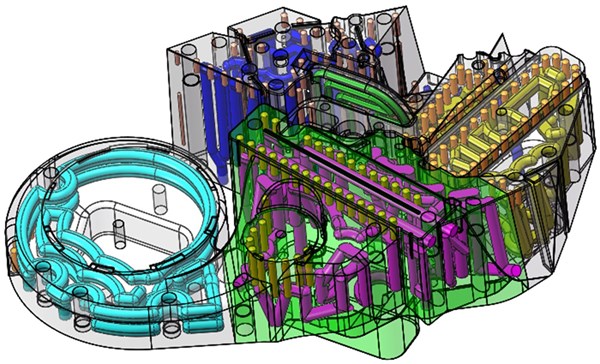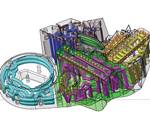The Next Game-Changing Technology in Tools and Dies
The first conformal-cooled tools entered the European market 25 years ago; a new conference aims to determine what the next 25 years could hold.
Last year, I achieved 50 years of continuous membership in the Society of Plastics Engineers. This experience affords me a historical perspective of the game-changing technologies that have formed the plastic industry. For example, in the mid-1960's, the reciprocating screw injection molding machine entered the market, replacing the plunger injection molding machine.
The screw machine was a game changer. For the next 10 years, the hottest topics in ANTEC and the trade magazines were the development of the various steels for a screw and then the focus became how to achieve the best screw design. Another game-changing technology was the use of closed feedback control systems on the press.
In the mid-60's, Whirlpool wanted to get away from the brown or black phenolic washing machine agitator—which weighed in at 15-18 lb apiece—and go to a more colorful design using polypropylene. The first year, the agitators cracked using Tide detergent as the benchmark. The resin company quickly reformulated for the next year, and the agitator became a game-changing success. That was the turning point in the industry to pivot from thermosets to thermoplastics.
Next Game-Changing Technology
We’re at the crossroads for another game-changing technology: conformal cooling for injection molds, blow molds, and diecasting. Conformal-cooled molds have been successfully produced in Europe for 25 years, but it has largely been a stealth technology, because just about everyone involved with a project has been required to sign a non-disclosure agreement (NDA).
The rollout of this technology parallels the rollout of the screw injection molding machine. First there was one technology (vacuum brazing) and then another (diffusion bonding) and now many technologies (additive manufacturing, etc.) to manufacture conformal-cooled mold inserts. After discussing the many technologies for manufacture, the present and next topic is how to optimize design of the conformal channels, since technology has unleashed a freedom of design that has not been available before.
Enter the Conformal Cooling Conference. The goal of the conference is to lift the veil of secrecy to disseminate and inform people of the many benefits of this technology. The conference was held in 2014 in Detroit and in 2015 in Chicago, and in 2017 it will be held in Minneapolis, on May 16-17.
The event is truly an International Conference. There are three companies (four speakers) coming from Europe to share their knowledge and experience with us. For the very first time, there is a speaker (who is unencumbered from NDA’s) coming to North America from Europe who will give a technical presentation on how vacuum brazing and diffusion bonding work to produce conformal cooled mold inserts. There are also three PhD’s who will speak and answer all your questions. Go to www.ConformalCoolingConference.com for more information.

Related Content
-
Getting into Plastics Additive Manufacturing? Avoid these Six Common Errors
There are a lot of 3D printing technologies out there, and it’s not uncommon for processors new to additive manufacturing to get tripped up. Here are some typical snafus, along with advice on how to avoid them before you start making parts.
-
3D Printing of Injection Molds Flows in a New Direction
Hybrids of additive manufacturing and CNC machining can shorten tooling turnaround times.
-
Business Slowing? There's Still Plenty of Stuff to Do
There are things you may have put off when you were occupied with shipping parts to customers. Maybe it’s time to put some of them on the front burner.















